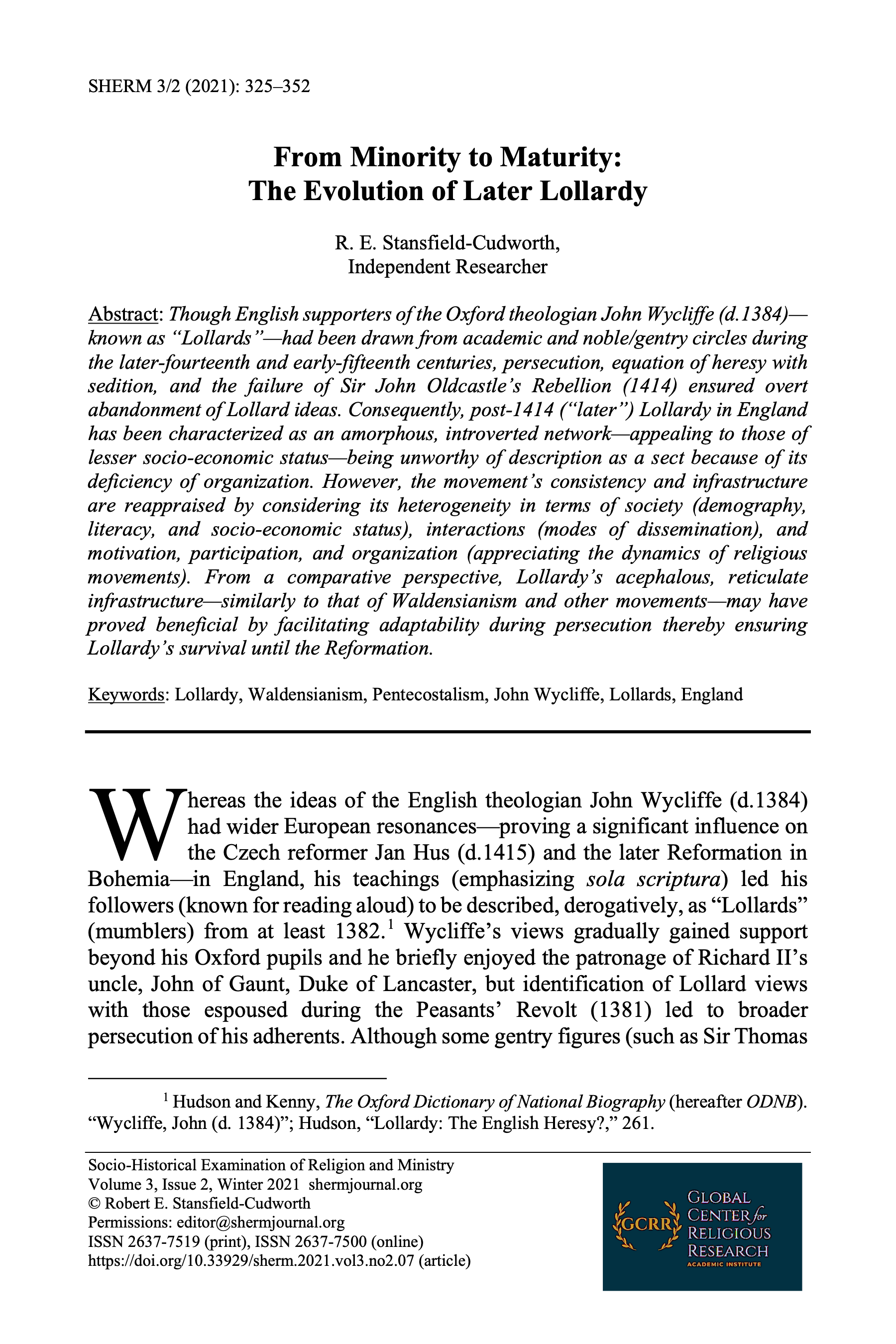Though English supporters of the Oxford theologian John Wycliffe (d.1384)—known as “Lollards”—had been drawn from academic and noble/gentry circles during the later-fourteenth and early-fifteenth centuries, persecution, equation of heresy with sedition, and the failure of Sir John Oldcastle’s Rebellion (1414) ensured overt abandonment of Lollard ideas. Consequently, post-1414 (“later”) Lollardy in England has been characterized as an amorphous, introverted network—appealing to those of lesser socio-economic status—being unworthy of description as a sect because of its deficiency of organization. However, the movement’s consistency and infrastructure are reappraised by considering its heterogeneity in terms of society (demography, literacy, and socio-economic status), interactions (modes of dissemination), and motivation, participation, and organization (appreciating the dynamics of religious movements). From a comparative perspective, Lollardy’s acephalous, reticulate infrastructure—similarly to that of Waldensianism and other movements—may have proved beneficial by facilitating adaptability during persecution thereby ensuring Lollardy’s survival until the Reformation.
From Minority to Maturity: The Evolution of Later Lollardy
R. E. Stansfield-Cudworth
_edited_.png)

(landscape)(.png)
